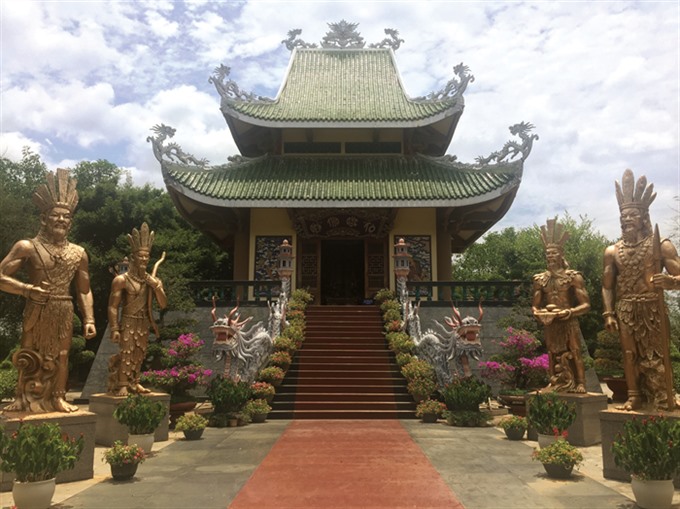Statues of the Hùng Kings, a symbol of the Vietnamese people’s ancestors, will be built following a plan towards 2035 of the Ministry of Culture, Sports and Tourism.

Statues of the Hùng Kings at Đồng Xanh Park in the Central Highlands province of Gia Lai. — Photo courtesy of the Department of Fine Arts, Photography and Exhibition
Deputy Minister Vương Duy Biên said the Government and the ministry approved the plan of building no more than six statues of the Hùng Kings.
Two conferences took place on Tuesday in Hà Nội and Thursday in HCM City to raise opinions from experts on the issue.
Biên said that building statues is necessary to express respect to, and pay tribute to the ancestors. They will also give people a sense of national patriotism and pride and enhance national solidarity.
“The statues should be of a good aesthetic quality, and must be in harmony with the surrounding environment. Besides this, they must be durable and of modern structures.”
There is a popular legend about the 18 Hùng Kings who built Văn Lang State, with Phong Châu as the capital - now Việt Trì City. The city still hosts many archaeological and historical relics related to the Hùng Kings’ reign.
Ruling the country through 18 generations (2879–258 BC), the Hùng Kings taught locals how to grow wet rice. They chose Nghĩa Lĩnh Mountain, the highest in the region, to perform rituals devoted to rice and sun deities to pray for lush crops. The worshipping rituals of the Hùng Kings are closely related to the ancestral worship traditions of most Vietnamese, an important part of their spiritual life. It was recognised as a UNESCO Intangible Cultural Heritage of Humanity in 2012.
The Hùng Kings are an important symbol in the spiritual life of Vietnamese people at home and overseas. The Vietnamese people want to build statues of the Hùng Kings’ to remember their roots and pray, according to historian Dương Trung Quốc.
"I advocate the plan of building statues for worshipping, but not the kind of monuments displayed in public spaces,” he said.
He said its wasteful and not really necessary to build statue in public spaces as the Hùng Kings are figures of legend, and very little is known about how they would have actually looked.
“The Hùng Kings are characters of legend. They have an important place in the spiritual minds of the people. But they lived in the first period of national history, when historical recordings were rarely kept. That’s the reason why it’s hard to describe them.”
Phạm Mai Hùng, vice chairman of the Việt Nam Association of Historical Sciences, agreed. He expressed his worry about attempts to portray the Hùng Kings, as there is very little information regarding their appearance.
There are several places in the country where statues of the Hùng Kings are displayed. Hùng pointed out that they contain many mistakes in the field of aesthetics and sculpture.
“Some statues are placed in tourist areas, for example those in Suối Tiên Park in HCM City and Đồng Xanh Park in the Central Highlands province of Gia Lai. They were built for the purpose of decorating the space. They lack holiness and artistic design.”
“One of the statues in HCM City is a bust statue. That is a taboo in Vietnamese spiritual life and religion. A worshipped statue should be whole-bodied.”
Experts shared the opinion that Hùng King statues have both value in terms of art and history, as well as a strong influence on the spiritual lives of Vietnamese people. The problem is how to make the statue fit with its surrounding environment, and respect its spiritual significance. — VNS